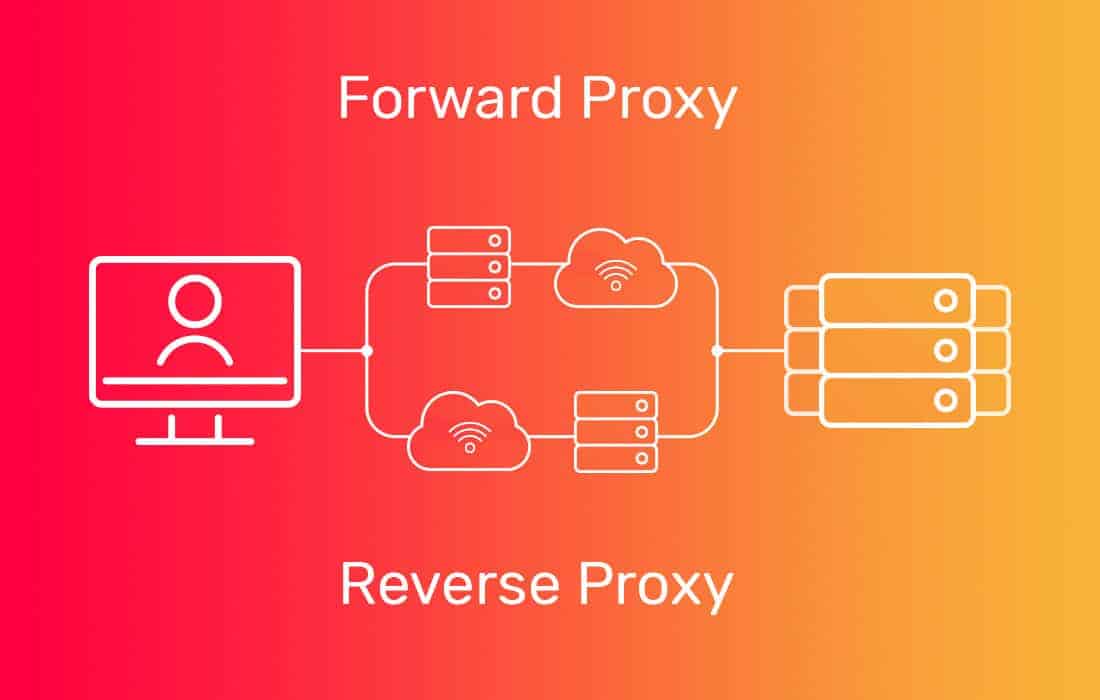Simply and Clearly: What is a Reverse Proxy Server?
We explain what reverse proxies are how they differ from forward proxies.

Reverse proxies help businesses optimize resources, balance loads, and improve cybersecurity. This article will teach you more about what they are and how they compare with forward proxies.
What Is a Reverse Proxy?
A reverse proxy acts on a request of an online service provider, so it’s the opposite from forward proxies who get the request directly from the user. This is the simple way of explaining it. In this case, it is the reverse proxy server that the user sees as their final destination. Instead of a client hiding their IP from you, you as a service provider are hiding your backend server from the client.
Consider a scenario where a client uses a forward proxy server Imagine a situation in which a client is using a forward proxy server (the type usually associated with proxies) and the online service provider uses a reverse proxy server. The outcome of this situation is an exchange in which two sides are hidden from one another – basically, two proxy servers just had a conversation.
Why Use a Reverse Proxy?
- Security – your backend server’s information isn’t visible to your user, which increases the level of security significantly. Users who might want to exploit any vulnerable points you might have in your infrastructure wouldn’t be able to do so. Most reverse proxies even have features that help keep backend servers secure from DDoS attacks by limiting the number of connections made from one IP or by blacklisting (rejecting) IPs.
- Web acceleration – a reverse proxy can be used to compress server responses prior to their return to a client this way reducing the amount of bandwidth required. It can also be used for caching, when the reverse proxy stores a copy of the backends server’s response and if the user makes the same request again, the reverse proxy provides an already saved response. SSL (TLS) encryption and decryption can also be done by a reverse proxy and that frees up a backend server’s resources. These are all great techniques to reduce load times.
- Load balancing – this is a big one, I’d say. Reverse proxy servers can also offer a load balancing solution for all the big websites – they can distribute all incoming traffic between multiple servers. This method prevents overloading the site or one of the servers by distributing request handling evenly. So even if one server fails to do its job, others are there to help.
- Global Server Load balancing – in this case, reverse proxies are doing the same job as with just plain load balancing, but now with locations! A reverse proxy can distribute requests from users to servers closest to them. For example, if a person from Warsaw is connecting to your website located in San Francisco, he might as well be redirected to a server somewhere in Poland. This kind of load balancing shortens load times by decreasing the physical distance a request has to travel. Helpful!
Is Reverse Proxy a Load Balancer?
Yes and no. From what I gathered during my research, a reverse proxy could and should be used even if you have only a single server. It provides security and can also act as the public face of your site (your backend server wouldn’t be visible to users). Using it as a load balancer only makes sense if you have multiple servers. But then again, if you have multiple servers, reverse proxy can distribute the traffic between them.
Essentially, a reverse proxy will do load balancing and most load balancers will also act as a reverse proxy (except things like a DNS-only load balancer). If you’d like to learn more about the differences between these two concepts, you could also invest some time into reading this too.
Conclusion
A reverse proxy is usually used by sysadmins to solve server overload problems by using the load balancing method and thus making the site reliably available to users. Load balancing helps distribute traffic between multiple servers, reducing the load for any single server.
A reverse proxy can also act as a technical “public face” of the website – an additional layer between the user and the backend infrastructure, providing all kinds of benefits.
And in very simple terms by Nginx, “a reverse proxy accepts a request from a client, forwards it to a server that can fulfill it, and returns the server’s response to the client (which means a server behind the reverse proxy can communicate with somewhat different features of a protocol or a different protocol).”

Frequently Asked Questions About Reverse Proxies
It captures all connections requests coming to a server and then does action according to predefined rules. For example, it can serve a cached version of a website if it’s static to save bandwidth.
You might want to balance your server loads to prevent it from crashing. Or you might want to save bandwidth. Or your workplace’s policy forbids accessing certain websites, and you want to control requests to them.
Sure. CDN services like Cloudflare are basically reverse proxies because they intercept and route your connection requests.